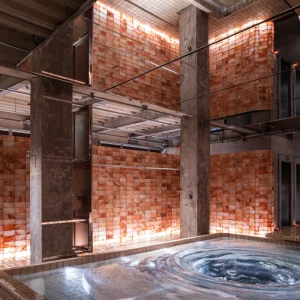The project will include a revamp of all of the hospital’s outpatient service areas, including a new Emergency Department. The project will also focus on revamping patient access (registration) and diagnostic imaging, including a dedicated woman’s imaging center.
The project includes renovation of the existing 5,095 square feet as well as the creation of an additional 7,611 square feet to add treatment rooms and support space. The additional space has been designed to maximize the use of available property and is located directly adjacent to the current emergency department.
The expansion will increase current patient treatment areas from 11 to 28. Additionally, the emergency department expansion and renovation will include addition of three trauma bays with direct access from the ambulance entrance, two gynecology rooms, an orthopedic treatment room, sixteen private exam rooms, an isolation room, a patient holding room and four observation rooms
The 140 square feet rooms will include a caregiver zone, a patient zone and a family zone.
Plans also include relocation of the CT scanner and other imaging equipment to space directly accessible by the ED. Patient registration will be relocated closer to the front doors of the hospital to help make registration more accessible and confidential.
Diagnostic imaging will undergo a complete transformation in order to support the department’s current and future needs. Rooms and hallways will be expanded and designed to accommodate new technology and increase patient flow. The new imaging area also includes a dedicated women’s center, complete with separate changing and waiting areas.
On reaching completion, the Spectrum Health United Hospital Emergency Department will be named the Stanley and Blanche Ash Emergency Department. The project will be financed fully through ongoing operations along with a significant gift provided by Blanche Ash and additional community support.
The emergency department at Spectrum Health United Hospital will be upgraded and enlarged in order to meet the demands of existing patient volume as well as provide capacity for expected future growth.
The project is expected to take 18 months to complete after it commences upon securing the Certificate of Need Approval from the State of Michigan.





